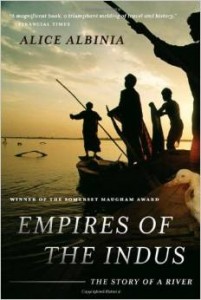Studying Indic religions?
You might consider Alice Albinia's excellent 2008 book, Empires of the Indus.
In the tradition of William Dalrymple, Albinia combines colorful travel writing with terrific history.
In one chapter, for example, Albina traces the spread of early Buddhism from India to the Swat Valley of Afghanistan where it enjoyed a renaissance in the first and second centuries CE. There we learn about magnificent stupas with amazing artwork and architecture and about the beginning of image worship as a way to distinguish Mayhayana Buddhism from Therevada Buddhism.
In another chapter, Albina travels to Pakistan along the Indus where she attends a wedding unlike any she had seen before. This was a Sheedi wedding. Sheedis, Albinia notes, are "descendants of slaves taken from Africa to Sindh by Muslim traders."
Here we learn that Muslims treated slaves differently than Christians in the Atlantic slave trade. Muslim slaves were integrated into Muslim life probably because the buyers and sellers were Muslim and because, says Albina, "in Islam, good treatment of slaves incurred heavenly benefits for the owner."
Albinia continues along the Indus to the Kalash mountain village of Bumboret in Pakistan. There she considers one of the great debates about the origins of Hinduism.
Did Aryans invade the Indus valley region and set up a caste system?
She explains the history of the "invasion" theory and considers new research that suggests that Aryans were indigenous to the valley.
Albinia weaves travel writing and history together. That combination gives the book personality and readability.

No comments:
Post a Comment